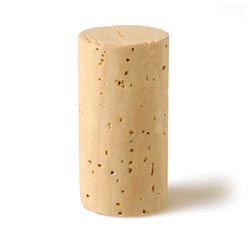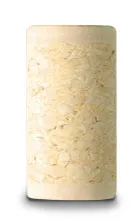Natural vs. not-so Natural Corks

Have you ever opened a bottle of wine, looked at the cork, and wondered where it came from?
You’re about to find out in this article.
. . .
Let’s start with the history of the cork.
Cork has been around for thousands of years. It was used by the Greeks and Romans and were found in ancient archaeological sites in Egypt.
Cork was used to making buoys to float fishing nets, to build ships to help it stay afloat, and even use them to craft sandals and women’s shoes. It was also used in the construction of homes, as it helped to keep the warmth in winter and the cool during summer, and prevented insect manifestations.
Unlike our current times, it wasn’t very popular for sealing bottles or vessels. People used glass stoppers, but it wasn’t always easy to remove them. Removing them meant that they had to break the glass stopper, which would sometimes result in breaking the actual bottle. But in the late 1600s’, it had slowly become a winemaker’s preferred choice as a sealing material after the creation of standard glass wine bottles.
And before the improvement of the cork, other materials like leathers, cloths, wax, and clay were used to seal the vessels.
. . .
What is Cork?
Corks are produced from the bark of cork oak trees called Quercus Suber, harvested every nine years throughout the life of the tree. These trees can be found in the Mediterranean region and are mostly grown in Portugal.
Portugal is the leading country in producing natural corks with almost 50% of total world production followed by Spain, Morocco, Algeria, Tunisia, France, and Italy.
. . .
In general, corks are divided into two groups: Natural Corks and Non-Natural Corks.
Natural corks are good for long aging.
When it’s time to start harvesting the cork, using a wedge-shaped side of the hatchet, vertical and horizontal cuts are made through the bark. The pieces are left outside for up to 6 months. This process strengthens and flattens them. Then they are treated using heat and water to remove any chemicals that might cause contaminations; the heat makes them softer and flexible, allowing it to be shaped into wine stoppers easily. The corks are cut into strips, and these strips are then punched using a machine with a blade that rotates at a very high speed. Once this process is finished, the corks are washed and sterilized, and then dried.
Non-Natural corks are cheap, and they don’t leave particles/dust in the wine of the bottle. However, they are not good for long aging wines.
Here are the most common types of wine stoppers winemakers use;
1. Natural Corks
Natural corks are cut directly from a sheet of wood. They’re ideal for long-term aging because when the cork comes into contact with the wine, it expands and holds firmly in place. They expand 85% of their original size after removing them from the bottle, and 99% after 24 hours.

2. Colmated Corks (Almost natural)
These are natural corks that have holes that got filled with cork powder and a natural glue compound. These are usually used to prevent wine flavoring through the cork. Suitable for medium aging (maximum of 3 years).

3. Technical cork Stopper or the Double Disk Cork
Also known as 1+1, made from an agglomerated cork for the middle section (body), with discs of natural corks glued to both ends. Ideal for wines that need medium aging (up to 18 months).

4. Agglomerated Corks
These are produced by either molding granulated cork using an FDA approved glue or by extrusion. It is usually made from natural cork bark scraps, cork dust, and glue. They’re inexpensive, dense, but are at a greater risk of taint, that’s why it’s suitable to be used for aging that takes a year or less.
5. Synthetic Corks
They are made from polyethylene, which is the same material used to produce milk bottles and plastic pipes. Some manufacturers use oil-based plastic, and some use plant-based polymers from corn and sugarcane. They do nearly the same job as natural cork, except it has no taint, and is consistent in oxygen transmission. They can be designed in a way where they can have set air transfer rates. One of its advantages is that the wine can be stored standing up contrary to being laid down because they don’t need the moisture from the wine to keep the cork in place. Suitable for medium aging (up to 3 years), but it is recommended to keep it for no longer than 2 years.
. . .
Now that you are familiar with different types of corks, next time you pop open a bottle of wine, don’t just toss the cork away, look and examine it. Try and see if you can guess which type it is.
Happy guessing
Cheers x

